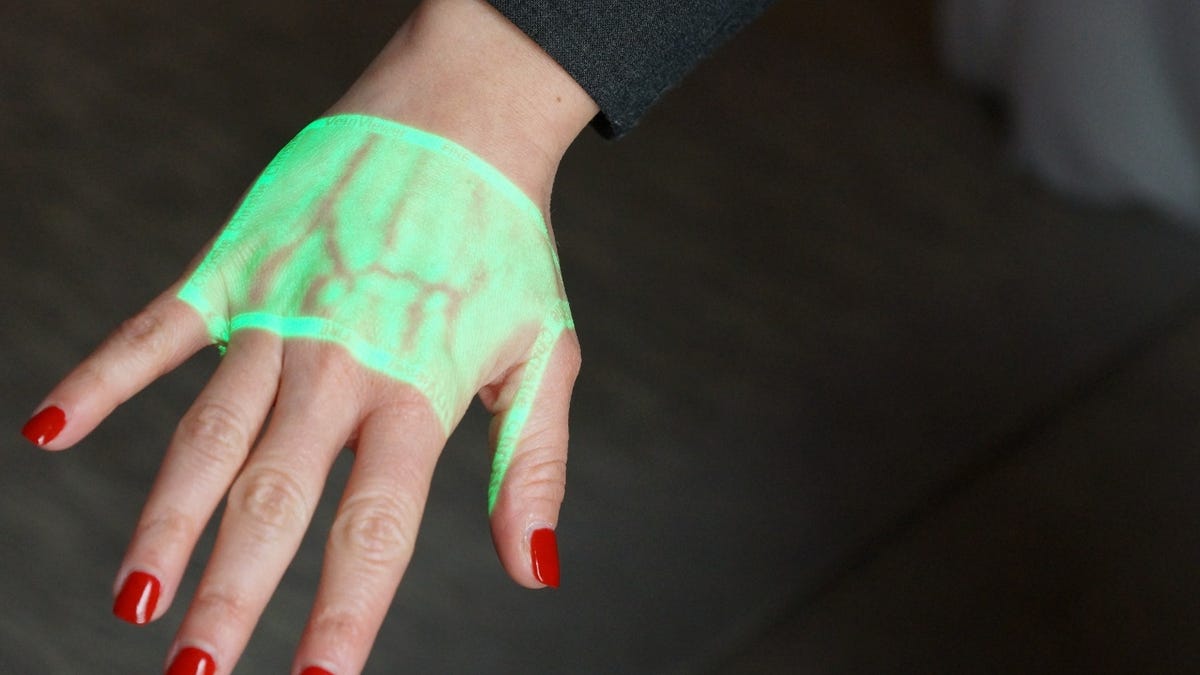How the humble light projector supercharges your tech
Forget classroom projectors. Companies like DLP are shining a light on exciting ways to affect cars, medicine, smartphones, and more.
With the flick of a switch and a flash of green light, a network of veins springs to the fore, mapped out just below the surface of the skin. This is no medical lab -- it's a darkened suite inside San Francisco's designer Clift Hotel -- but I already see how the recent sting of a donation nurse thumping the inside of both elbows in search of a vein could, and should, be a nervy, time-consuming thing of the past.
The VeinViewer Flex isn't new. In fact, the first generation of VeinViewer debuted in 2006. But its use of infrared light to illuminate a hidden network within the body is seldom appreciated outside of medical circles.
Light, it turns out, and the projectors that channel it, can do quite a bit.
Let's go back to why I'm here in this dimly lit hotel room in the first place, staring at squiggly lines under infrared light. It's because DLP, a subsidiary of Texas Instruments (which also makes smartphone and tablet processors), is showing off the various ways its partners use its chips.
There are the cinema-grade chips you encounter in all digital IMAX theaters and even in home projectors like this one. Then there are the much tinier pico projectors that show up in everything from phone-charging sleeves and specialty toys to tablets and smartphones like the Samsung Galaxy Beam.
The demo table also holds a 3D printer that uses UV light to help cure the resin, a technique that DLP claims will create more-accurate printables with higher-resolution detail.
Beckoning me to a second room within the suite, the Texas Instruments team reveals a tall, thick bust of a car console, illuminated from behind by -- you guessed it -- a DLP projector chipset.
The console idea, which CNET Car Tech writers saw in a concept Bentley this January, features a long touch screen and dials that are devoid of any circuitry.
Although you twist the volume and jog wheels as you would in any other car, it's an infrared camera and infrared light that track your motions and respond with shifting 1080p HD imagery. The result of the demo was a display that responds to taps and gestures. In addition, the system uses a predefined logic to determine if it's the driver or passenger who's calling the shots.
Since the car console uses no traditional capacitive film, you won't have to worry if you're wearing gloves.
DLP is also working on an even more involved head-up display that inserts some augmented reality into the mix. Sometime starting in 2016, look for your navigation assistant to project a turn signal in your line of sight, one that looks like it's taking shape in the middle of the road.
The advantage? This type of projection marks out exactly where you want to turn, which is more precise than the vague suggestions we get now, and one that often prompts uncertain drivers to careen down an alley instead of their desired street. Expect German carmakers to lead the way here, says DLP.
DLP isn't the only maker of projection chipsets by a long shot, and its partners and developers have long hacked its components for commercial and home-grown use.
Now, though, the company is taking a more proactive approach in supplying drivers and software to developers, so its projectors are showing up in more places, maybe even in your tablet or living room.


